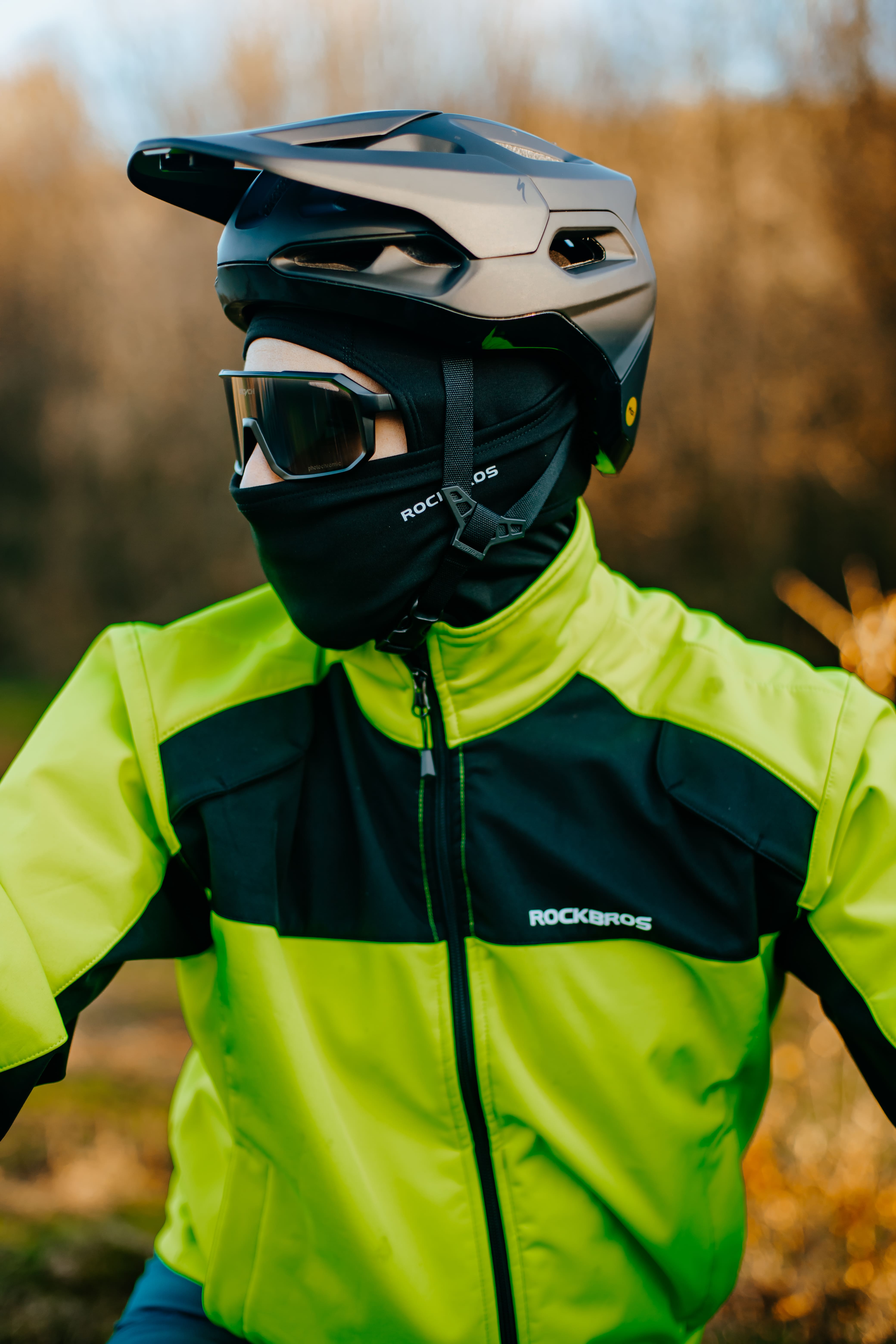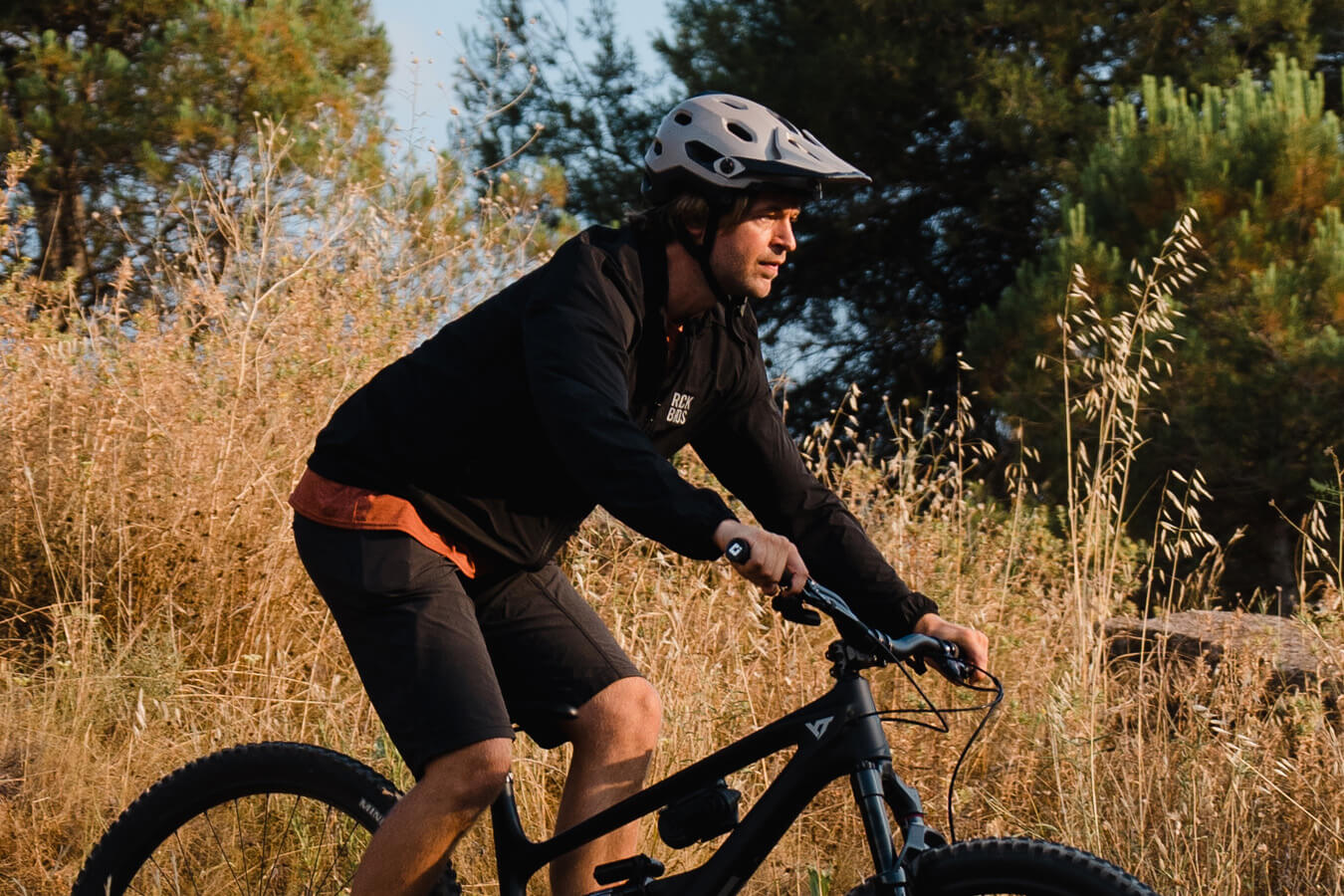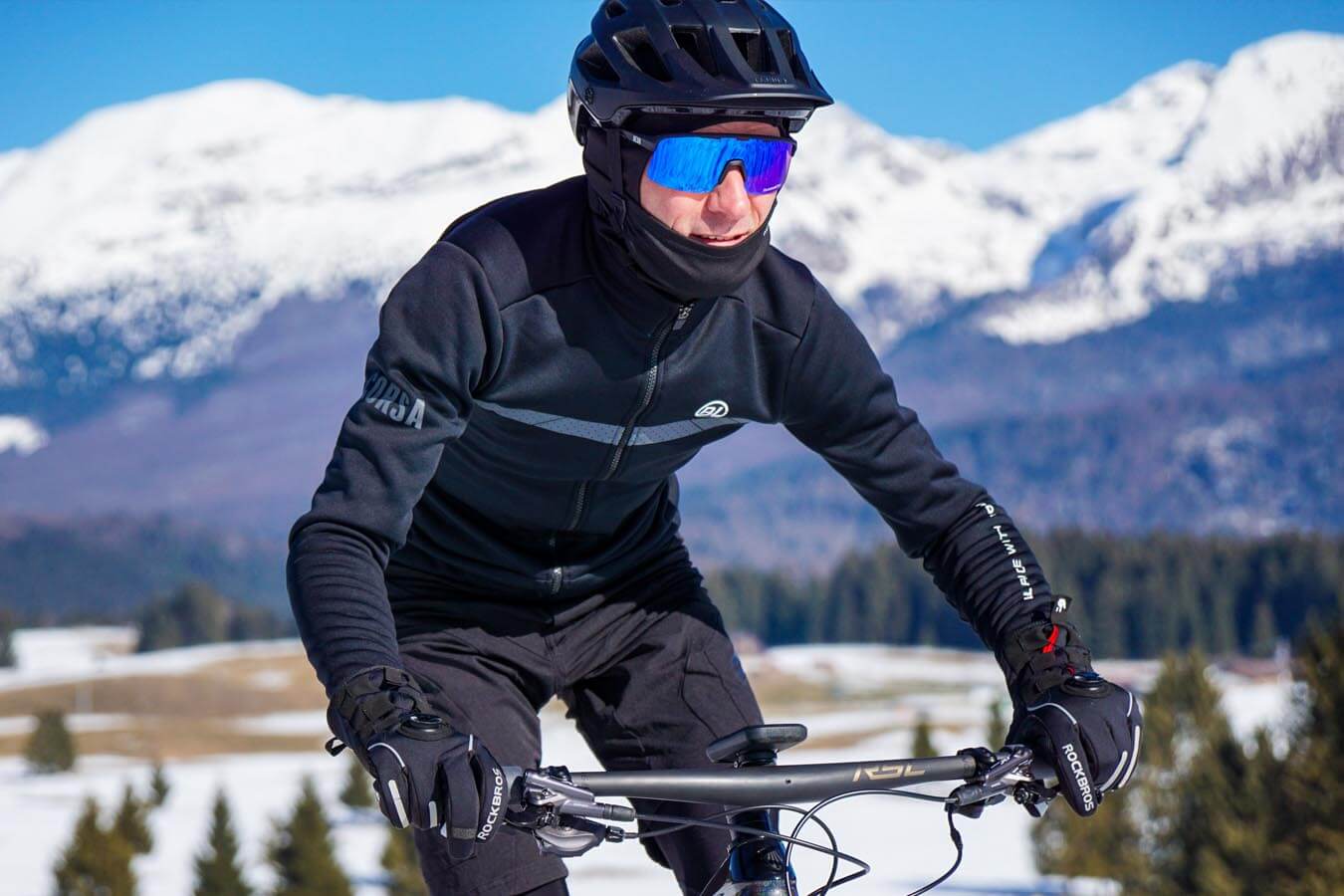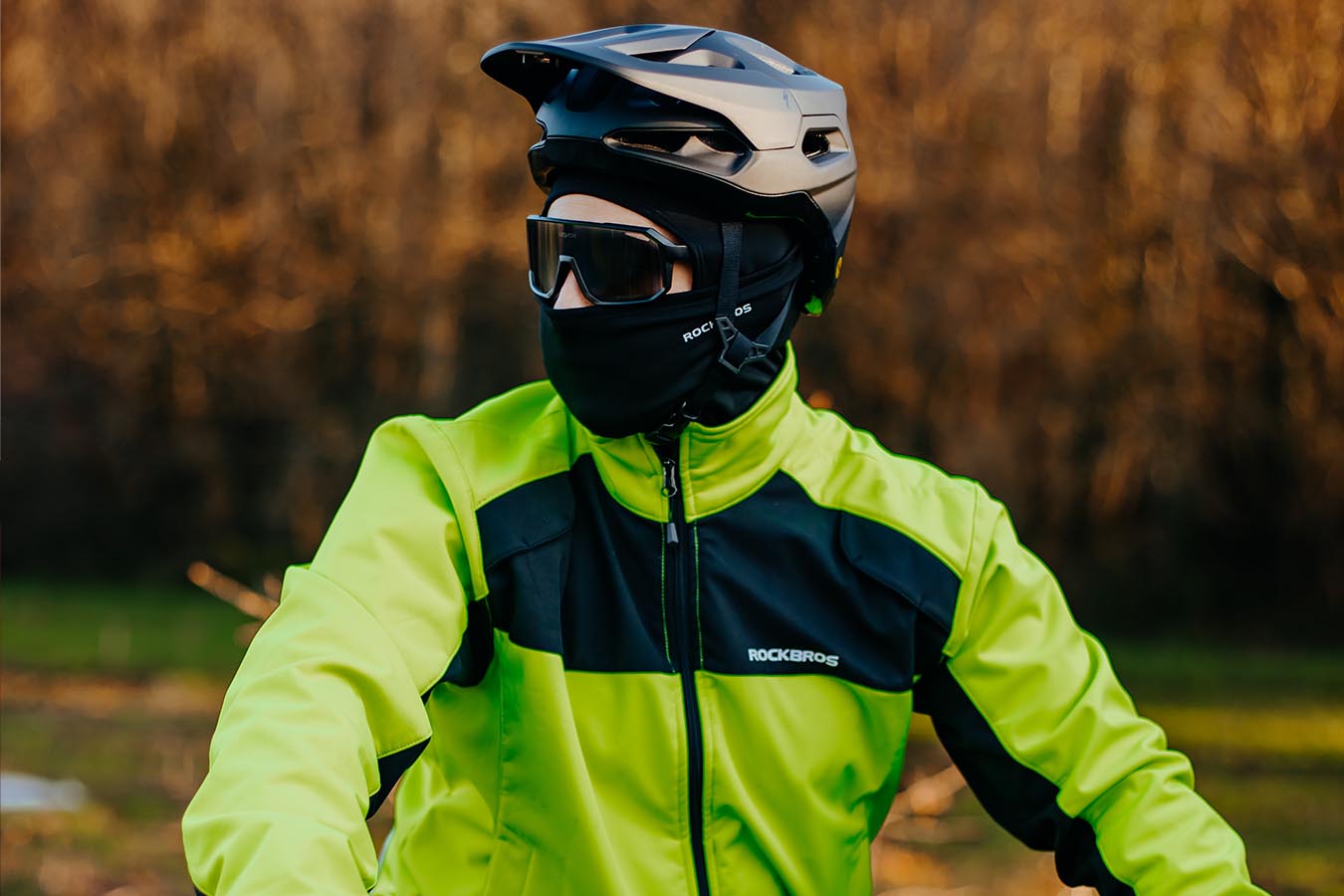Cycling in different weather can be challenging. Rain, wind, cold, and even hot sun all make rides tougher, as shown by studies from cities around the world. To stay comfortable, regulate your body temperature, and ride safely, the three-layer system is key. Layering your cycling clothes lets you control warmth, wick away sweat, and block wind or rain. Every ride is unique, so you can adjust your layers to match the conditions.
Key Takeaways:
- Use three layers: a base layer, a mid layer, and an outer layer. The base layer wicks sweat away from your skin. The mid layer keeps you warm. The outer layer protects you from wind and rain. This system helps you stay comfortable no matter the weather.
- Choose fabrics that move sweat away from your body. Merino wool and polyester work well. Avoid cotton because it absorbs moisture and can leave you feeling cold when wet.
- Wear cycling clothes that fit close to your body but aren’t too tight. This allows easy movement, keeps you comfortable, and lets air circulate.
- Adjust your layers and add accessories like gloves, shoe covers, or hats based on the weather. This helps you stay warm, dry, or cool during your ride.
- Always prepare for weather changes. Bring packable rain gear, wear reflective clothing, and use bright lights to stay visible and safe.
Layer Cycling Clothing Basics
Layer cycling clothing helps you stay safe and comfortable. It works in all kinds of weather. If you wear the right layers, you can ride longer. You will feel better and focus on biking, not your clothes. Let’s look at the basics so you can make a good cycling kit.
Three-Layer System
Cyclists talk about layers because each one does something important. All three layers work together to keep your body at the right temperature. Here is how the three-layer system works:
|
Layer |
Key Functions |
|
Base Layer |
Wicks moisture away from skin to keep it dry; regulates body temperature; saves energy by preventing sweat from cooling on skin. |
|
Mid Layer |
Provides insulation to trap heat; maintains breathability; also wicks sweat to keep dry. |
|
Outer Layer |
Protects against external elements like wind, rain, and snow; balances weatherproofing with breathability to maintain comfort and freedom of movement. |
Wearing layers this way helps your body handle heat and sweat. Studies show that a good base layer helps your body get rid of extra heat and moisture. If you skip a layer or use it wrong, you might get too sweaty or too cold. This can make your ride hard or even unsafe.
Tip: Change your layers if you plan to ride hard or if the weather changes. Too much insulation can make you too hot. Not enough can make you cold.
Moisture Management
Sweat is a big problem when you ride. If your clothes hold sweat, you will feel wet and cold. That is why moisture management is important. The base layer’s job is to pull sweat away from your skin. Polyester and nylon are good because they dry fast and keep you fresh. Merino wool is soft and does not smell bad. It keeps you warm even when wet, but it dries more slowly.
- Moisture-wicking fabrics keep you dry and stop chafing.
- Breathable materials let air move through so sweat can dry.
- Do not wear cotton. It holds sweat and stays wet, making you cold.
- If you ride for a long time, good moisture management keeps your skin healthy. Chamois pads in cycling shorts use special fabrics to keep you dry and stop rashes.
Fit and Breathability
Fit is just as important as fabric. Your cycling clothes should fit close to your body. They should not feel tight or uncomfortable. A good fit helps you move easily and cuts down on wind. This makes you faster and more comfortable.
Breathability is also important. Look for jerseys and jackets with mesh or zippers for air. These features let heat and sweat out, so you do not get too hot. In summer, light jerseys help you stay cool. In winter, warm but breathable layers keep you warm without trapping sweat.
When you wear cycling clothes with the right fit and fabric, you will have a better ride. You will stay dry, warm, or cool, and ready for any weather.

Warm Weather
When the sun is out and the temperature climbs, you want to stay cool and dry on your ride. Layer Cycling Clothing for hot days means picking the right fabrics and gear to help your body breathe and protect your skin.
Lightweight Layers
You need lightweight layers that pull sweat away from your skin. These layers help your sweat dry fast, which cools you down. Mesh base layers and thin jerseys work well. They use special fibers and designs to move sweat off your body and let air flow through. This keeps you from feeling sticky or overheated, even when you ride hard.
- Mesh base layers wick sweat and dry quickly.
- Mesh fabrics keep you cool and comfortable.
- Form-fitting designs stop chafing and let you move freely.
Tip: Start your ride with a light jersey and base layer. You can always unzip your jersey for more airflow if you get too warm.
Breathable Fabrics
Choosing the right fabric makes a big difference. Polyester and nylon are top picks for hot weather. They are light, strong, and dry fast. Many pro cyclists wear jerseys made from these materials because they help control sweat and keep you cool.
|
Fabric Type |
Moisture-Wicking |
Breathability |
Best Use in Heat |
|
Polyester |
Excellent |
High |
Jerseys, base layers |
|
Nylon |
Good |
High |
Shorts, high-friction areas |
|
Poly/Spandex Blends |
Excellent |
High |
Long rides, flexible fit |
Some brands use mesh or micro-perforated fabrics for even more airflow. These fabrics let heat escape and help your body stay at the right temperature. Jerseys like the ROAD TO SKY Pro use special mesh that gives both UPF sun protection and cooling comfort.
Sun Protection
The sun can be strong, so you need to protect your skin and eyes. Many cycling jerseys and shorts use fabrics that block UV rays. These materials often have UPF ratings between 28 and 50+. Darker colors and tighter weaves give better protection. Still, you should cover exposed skin and use sunscreen.
- Wear sun sleeves or long-sleeve jerseys made from UV-protective, breathable fabric.
- Use a cycling cap under your helmet to shield your head.
- Always wear sunglasses that block 100% of UVA and UVB rays to protect your eyes.
Note: Sun sleeves, caps, and sunglasses work together to lower your risk of sunburn and eye damage. They keep you safe while you enjoy your ride.
Layering cycling Clothing the right way for warm weather helps you ride longer and feel better, even on the hottest days.

Cold Weather
When you ride in cold weather, staying warm and dry can make or break your ride. You need to think about every layer you wear, from your shirt to your socks. Let’s break down how to layer cycling clothing for chilly days.
Key Layers
You want to build your outfit with three main layers. Each one has a job to do:
- Base Layer: Start with a snug, moisture-wicking shirt. Merino wool or a polyester blend works best. These fabrics pull sweat away from your skin and keep you warm, even if you get a little wet. Never use cotton because it holds moisture and makes you cold.
- Mid Layer: Add an insulating layer, like a fleece cycling jersey or a thicker long-sleeve top. This traps heat close to your body but still lets sweat escape.
- Outer Layer: Finish with a windproof and water-resistant jacket. Softshell jackets work for most cold days. If it’s raining or snowing, pick a hardshell jacket for full protection.
Here’s a simple guide for what to wear at different temperatures:
|
Temperature (°F) |
Base Layer |
Mid Layer |
Outer Layer |
Legs |
Extremities |
|
40-50 |
Light merino/poly blend |
Insulated jersey/fleece |
Softshell jacket |
Thermal tights |
Midweight gloves, wool socks, cap |
|
30-40 |
Merino/poly blend |
Fleece or insulated top |
Softshell + windproof shell |
Thermal bib tights |
Heavy gloves, thermal cap |
|
20-30 |
Midweight merino/poly |
Thick fleece/softshell |
Hardshell jacket |
Windproof tights |
Lobster gloves, balaclava |
Tip: You can always remove a layer if you get too warm. Start your ride feeling a little chilly. You’ll warm up fast once you start pedaling.
Recommended Materials
Choosing the right materials helps you stay warm without feeling bulky. Here are some top picks:
- Merino wool: This is a favorite for base layers. It keeps you warm, wicks sweat, and fights odor. You can wear it for days without it smelling bad.
- Polyester and polypropylene: These synthetic fibers dry quickly and move sweat away from your skin. They work well for high-energy rides.
- Fleece: Great for mid layers. Fleece traps heat but lets your skin breathe.
- Softshell and hardshell fabrics: Softshell jackets block wind and light rain but let sweat escape. Hardshell jackets are best for heavy rain or snow. They keep water out , but may feel less breathable.
- Blends: Some clothes mix merino wool with polyester. This gives you warmth, stretch, and quick drying all in one.
Note: Look for jackets and tights with breathable, waterproof membranes. These keep you dry from rain and sweat.
Accessories
Don’t forget your hands, feet, and head. These parts lose heat fast, and cold fingers or toes can ruin your ride. Here’s what helps most:
- Gloves: Use insulated, windproof gloves. For really cold days, try lobster gloves or add liner gloves underneath. Some gloves even have heating elements!
- Socks: Merino wool socks keep your feet warm and dry. If it’s freezing, add a thin liner sock or use chemical toe warmers.
- Shoe covers: Neoprene or windproof shoe covers block wind and keep your toes toasty. They slip over your cycling shoes and help in snow or rain.
- Helmet liners and caps: A thin cap or skull cap under your helmet keeps your head warm. For extra cold, use a balaclava or a helmet cover to block the wind.
- Neck gaiters or balaclavas: These protect your neck and face from icy wind. You can pull them up or down as needed.
- Leg warmers: These add extra insulation for your legs and are easy to remove if you get too hot.
Pro tip: Cover all exposed skin when it’s below freezing. Use chemical hand and toe warmers for long rides in the cold.
Layer Cycling Clothing the right way in winter means you can ride longer and stay comfortable, even when the temperature drops. Try different combinations to see what works best for you. ROCKBROS offers a wide range of cold-weather cycling accessories—like thermal gloves and waterproof shoe covers—that balance comfort and protection in extreme conditions.
Rainy and Transitional Weather
Riding in the rain or changing weather can be challenging. But with the right gear, you can stay dry and comfortable on your ride. Let’s look at how to choose the right cycling layers for these conditions.
Waterproof Layers
A good rain jacket should fit over your other clothes. It should pack down small so you can carry it. Many riders use vests or gilets too. These block wind and light rain. You can put them in your pocket when the sun comes out.
Versatile Accessories
The weather can change fast in spring or fall. You need gear you can put on or take off quickly. Arm and knee warmers are great for this. They keep you warm when it’s cold. You can take them off if you get hot. Some warmers also block UV rays or light rain. Choosing items with reflective details is important because visibility is often reduced in rainy conditions. Reflective gear helps riders behind you spot you in low light, keeping you safer. Similarly, a waterproof bike light is a great choice. Other helpful items are:
- Packable rain jackets and vests
- Waterproof shoe covers
- Helmet covers
- Lightweight gloves
- Arm and knee warmers
- Waterproof bike lights
- Waterproof bike bags
Many riders use packable rain jackets, vests, waterproof shoe covers, and helmet covers to stay dry and comfortable. In rainy or unpredictable weather, having a waterproof bike bag is especially important. When you store valuables like Bluetooth earbuds or your phone inside, you definitely don’t want them damaged by the elements. Instead of risking costly repairs, a waterproof bike bag solves this problem — plus it can hold all your cycling essentials. ROCKBROS bike bags are very popular overseas, offering a smart balance of waterproof protection and generous storage. They keep your gear safe and make your ride hassle-free.
Quick Adjustments for Sudden Weather
Wet roads and dark clouds mean you must think about safety. Bright, reflective clothes and strong bike lights help you stand out. Studies say using front and back lights, even in the day, lowers crash risk by almost 20%. Reflective strips on your jacket, gloves, and helmet help drivers see you better.
Here are some tips for sudden weather changes:
- Keep a waterproof jacket and gloves in your pocket.
- Use arm and knee warmers to control your temperature.
- Ride slower on wet roads and do not turn sharply.
- Check the weather before you ride and plan a route near a shelter if storms might come.
Layer Cycling Clothing the smart way helps you stay dry, safe, and comfortable, no matter how the weather changes.
You can master cycling in any weather by following a few simple rules.
- Use a three-layer system: moisture-wicking base, insulating mid, and protective outer layer.
- Pick the right fit and materials for each season.
- Add accessories like gloves, hats, and shoe covers for extra comfort.
-
Make a checklist based on your local weather and how your body feels.
Try different combos and adjust as you go. Every ride teaches you something new. Enjoy the freedom of cycling, rain or shine!








Leave a comment
This site is protected by hCaptcha and the hCaptcha Privacy Policy and Terms of Service apply.